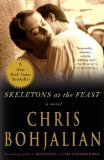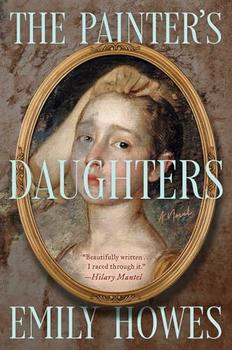Summary | Excerpt | Reading Guide | Reviews | Beyond the Book | Read-Alikes | Genres & Themes | Author Bio

Critics' Opinion:
Readers' Opinion:
First Published:
May 2008, 384 pages
Paperback:
Feb 2009, 384 pages
 Book Reviewed by:
Book Reviewed by:
Vy Armour
Buy This Book
Please be aware that this discussion guide will contain spoilers!
Skeletons at the Feast: Reading Guide & Q&A
Reading Guide
In the chaotic months before the final collapse of the Third Reich, the Germans living in the eastern part of Hitler’s empire fled their homes to escape the onslaught of the Soviet Army. If these refugees didn’t know the specifics of the atrocities their people had committed on Russian soil –and, in fact, were still committing in concentration camps across Poland and Germany–they nonetheless understood that the Russians were going to be merciless.
It is this world that Chris Bohjalian brings vividly and powerfully to life in Skeletons at the Feast. A Prussian aristocrat struggles west with her beautiful daughter, her young son, and a Scottish prisoner of war. Meanwhile, a female Jewish prisoner struggles to survive first the horrors of a concentration camp and then a forced march west in the ice and snow of a German winter. And a Jewish man who has leapt from a train bound for a death camp learns to do whatever he must to survive.
This reader’s guide is intended as a starting point for your discussion of the novel.
Chris Bohjalian talks about Skeletons at the Feast
Skeletons at the Feast was inspired by an actual World War II
diary. How did you find out about this diary? What about it led you to write
this book?
Like most of my novels, the idea for Skeletons at the Feast emerged
from the minutiae of everyday life. There was a little girl in my daughter's
kindergarten class here in Vermont, and one day her father, Gerd Krahn, asked me
if I would look at his German grandmother's unpublished diary. His mother had
just finished translating it into English. This was back in 1998.
Usually, this sort of request is a novelist's worst nightmare: Most family
histories are dull as toast and badly written. But Gerd is a very good friend of
mine, and so I was happy to read the diary that his East Prussian grandmother,
Eva Henatsch, kept from 1920 through 1945.
Much of the diary focused upon the day-to-day activities of helping to manage a
sizable estate in a remote, still rural corner of Europe. But then there were
the passages that chronicled 1945 and Eva's family's arduous trek west ahead of
the Soviet Army – a journey that was always grueling and often terrifying. I was
fascinated. But I still didn't anticipate that it would ever inspire me to
embark upon a novel.
Eight years later, however, in 2006, I read Max Hastings's history of the last
year of the war in Germany, Armageddon, and I was struck by how often the
anecdotes in Hastings's nonfiction account mirrored moments in that diary.
Apparently, the horrors in Henatsch's diary were not unique. But nor were the
moments of idiosyncratic human connection – such as the occasional friendships
(and even romances) that grew between Allied prisoners of war who were sent to
the farms in East Prussia to help with the harvest and the teenage German farm
girls there. It was thus almost out of intellectual curiosity that I asked Gerd
if I could revisit his grandmother's diary. It was on that second reading that I
began to imagine a novel.
As the author of eleven novels you have written about a wide range of
subjects, though your last book The Double Bind and now Skeletons at
the Feast were inspired by a real life story or person. Does having a back
story make writing a novel more challenging? Do you actively seek real life
stories that inspire you?
I've been lucky: I've never had to actively seek a story. They've always
appeared right in my backyard – even this new book, which is set in another part
of the world in another era.
Of course, it's important to note that although characters in Skeletons at
the Feast endure some of the same trials as Eva Henatsch and her remarkable
family, Irmgard Emmerich – Mutti in my novel – is not Eva. Nor is Anna Emmerich,
my principal heroine, a recreation of Eva's daughter, Heidi. I hope the
fictional Mutti and Anna have a semblance of Eva's and Heidi's monumental
courage and resiliency and compassion, but they are nonetheless fictional
constructs.
So, I would say it is helpful to have an inspiration to get me excited about a
period or an idea. But there is still the hard work of imaging a story and a
people, and constructing a compelling fictional world.
Your novels tend to center on ordinary people who find themselves trapped in
extraordinarily difficult situations, and clearly that is true of this book as
well. Beyond that, how would you compare Skeletons at the Feast to your
other work?
It's quite different in that it's set in a particular historical moment. But
it still shares some specific universalities with my other work: Ordinary people
coping with trials they had never before imagined; young people coming of age in
moments of seemingly unbearable stress; and, I hope, the sorts of moral
ambiguity that give us all pause and force us to examine our values.
You bring to life in vivid detail an aspect of WWII that we haven't heard a
lot about: the frenzied evacuation of the Germans as the Eastern front crumbled
and the Russians advanced. What research did you draw on to learn more about
this part of history?
The last six months of the Second World War in Poland and the eastern edges
of Germany had to have been one of the most horrific periods in human history.
The magnitude of the carnage is almost inconceivable. There were concentration
camps that were still functioning; there were the starving, desperately ill
prisoners from other camps whom the Nazis were marching west in the cold; there
were the Russian soldiers dying in monumental numbers since a part of the
Russian military strategy was simply attrition; there were the German soldiers
fighting like cornered wolves because they knew they didn't dare surrender after
the atrocities their army had committed across the Soviet Union; and then there
were the terrified German civilians – women and children and old people –
plodding west ahead of the advancing Russian army.
The scope of the crucible is always brought home to me by one single moment: The
sinking of the Wilhelm Gustloff on January 30, 1945. The former cruise ship was
the very last vessel to leave the surrounded East Prussian port of Gotenhafen,
and so over 10,000 frantic evacuees fought their way aboard. (Think for a moment
of those images we've all seen of the last helicopters leaving Saigon in 1975 as
the North Vietnamese were arriving – then move that chaos to a port and multiply
it a thousand times over.) The ship was quickly sunk by a Russian submarine, and
over 9,500 people went to the bottom of the Baltic – or six times the number of
people who died on the Titanic.
In any case, I did a great deal of secondary research. But the most important
details in the new novel came from my interviews with Holocaust survivors –
including individuals who endured those horrific winter death marches – and with
Germans who were alive in the period. Their stories always were wrenching.
The three principal characters in Skeletons—Anna, the young woman from the
well-to-do Prussian family; Callum, the Scottish POW; and Uri, the Jewish man
passing himself off as a German soldier—are all so different. Which was the most
challenging character for you?
I think it was Callum, the Scottish POW. Anna and Uri have their secrets and
their guilts and their inner demons, and so they were always interesting to me.
But Callum? In the novel he's barely 20 when he's captured, and he never even
fired his weapon in battle before being captured. He was, in some ways, almost
too good at first. Too unambiguous. He proved to be a bit of a challenge.
Are you already at work on your next novel? Any hints as to what it's about?
I am, yes. It's a love story – in some ways, a retelling of "Romeo and
Juliet" – set in Florence and Tuscany toward the end of the Second World War.
It's the second book in my planned World War Two trilogy. The first of the
books, of course, is Skeletons at the Feast. The final of the three will
be set on one of the Channel Islands.
Unless otherwise stated, this discussion guide is reprinted with the permission of Three Rivers. Any page references refer to a USA edition of the book, usually the trade paperback version, and may vary in other editions.




Poetry is like fish: if it's fresh, it's good; if it's stale, it's bad; and if you're not certain, try it on the ...
Click Here to find out who said this, as well as discovering other famous literary quotes!
Your guide toexceptional books
BookBrowse seeks out and recommends the best in contemporary fiction and nonfiction—books that not only engage and entertain but also deepen our understanding of ourselves and the world around us.